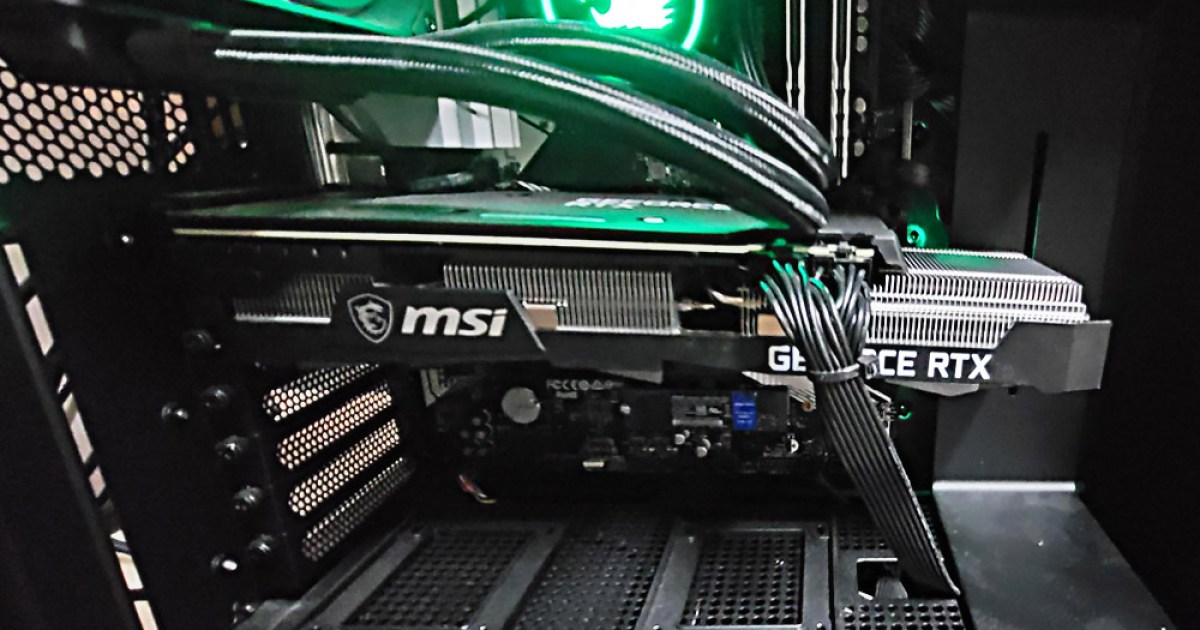Despite graphics card PCBs becoming smaller and smaller with each successive generation — some of the latest RTX 50 cards have PCBs just a few inches long — their power consumption has gone up, and the size of the coolers has trended upwards with it. That means heavier cards, with less support, so GPU droop, or graphics card sagging where the card bends downwards in its slot with the aide of gravity, is equally common. Asus’ new solution to that is to add a gyroscope to its top cards to detect whether they’re drooping to a dangerous extent.
That’s a cool idea and one that has some merit. If you’re spending upwards of $3,000 on an overpriced and hard-to-come-by graphics card, it’s probably a good bit of peace of mind to have some hardware tell you if the card ever bends too far, or if the card was jostled too much during delivery. I certainly wouldn’t turn it down.
But it also feels a little overblown, and certainly isn’t a necessity. If you’ve ever built a PC, you know what it looks like when the card is seated properly in the slot and it’s obvious when the cooler is dragging it down. You don’t need a spirit level to see when a card isn’t sitting horizontally.
And regardless, if the card is bending or drooping, it’ll need support. Which you could just add as a matter of course as most gamers with large, heavy, high-end cards do anyway.
But that’s not the only way to prevent it.
Armored slots go a long way
It might be a bit of a marketing gimmick to call a PCIexpress slot with a bit of metallic support “Armored,” but it’s very classic gamer language. It makes me think of the Radeon boxes with the CGI render of ATI’s Ruby character.
Nomenclature aside, though, a reinforced PCIe slot goes a long way to handling the additional weight of heavy cards. If you’re planning on grabbing an RTX 5090, or worse yet, an RTX 4090 (the reference design is close to 5lbs!), making sure you’re slotting it into a PCIe x16 port which has some additional strengthening is a good plan.
Anti-sag brackets are cheap

Although I doubt Asus spent a ton on adding a little gyro chip to its flagship graphics card, I bet it cost more than adding a little standoff to hold the far end of the card up. Most big graphics card come with some form of GPU bracket to take some of the strain, but even if yours doesn’t, you can buy third-party options for less than $10. If you’re spending hundreds or (let’s face it) thousands of dollars on a graphics card, then spending a few more to make sure it’s held up properly isn’t a big deal.
You don’t even need to buy one. Just make one out of Lego bricks. Or a small wargaming figure, or just about anything that’s a couple of inches tall. You don’t even need to fully support it. Just make sure it’s not drooping at an extreme-enough angle to damage the PCB.
What about a riser?
Or you can go fancy and use a riser kit. This is a bit more of an expensive option for GPU sag, but the cooler can’t pull the card down if the card isn’t lying flat. Using a riser cable and bracket can make it so your card stands vertically instead of horizontally (or whatever kind of placement you want). You’ll need to make sure the card is supported in its new position, and there are unique performance and stability issues that can arise when using a riser kit, but it’s a relatively simple way to avoid GPU sagging.
Just lie your PC flat
You know what’s easier and cheaper than changing the orientation of your graphics card within your PC? Changing the orientation of the entire thing. Just pick the case up and lie it on its side. That way the GPU is standing straight up and won’t have any problems being dragged down towards the center of the Earth.
You do need a bit more space for this and it’s important to consider if this might impact your thermals — hot air rises, and those top fans won’t be as effective lying on their side — but as long as you don’t run into any issues, this is a very quick way to fix GPU sag issues if you find yourself in a pinch.
Or you can just buy an RTX 5090 with a gyroscope in it. Your call.

